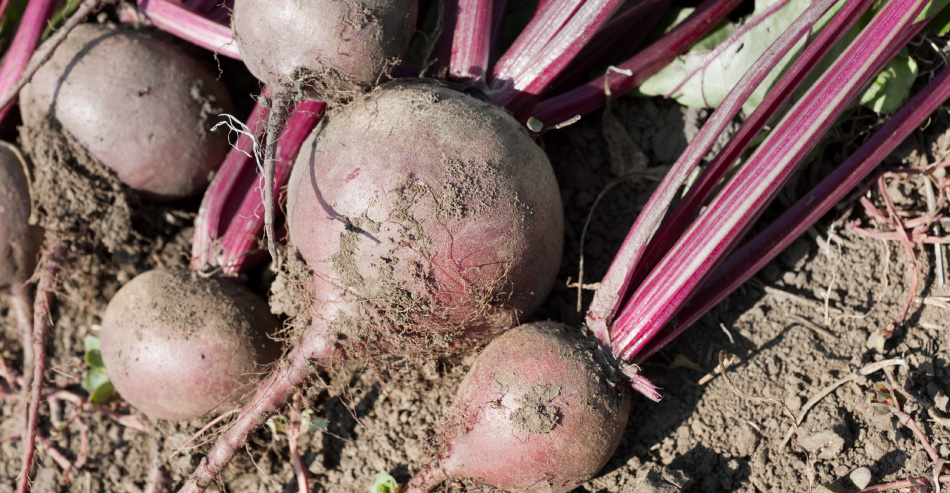
When we took the decision to go organic with our farming operation, our goal was to use natural methods and local sources of energy and raw materials and establish a unique and totally closed system of livestock and crop farming, and we succeeded.
Organic farming is a system of production that seeks to preserve the health of the soil, the environment and people. It is based on environmentally safe processes, biodiversity and cycles that are in harmony with local conditions, instead of using resources that produce an unwanted impact.
Organic farming combines tradition, innovation and science to create a better environment and to foster fair conditions and a better quality of life for all those involved.
Organic production methods involve the use of natural processes and substances, and limit or completely eliminate the use of synthetic materials.
1) Because you know what you are eating: organic farming precludes the use of hydrogenated fats and additives such as the controversial aspartame (artificial sweetener, referred to by its detractors as “sweet poison”), tartrazine (a food colouring) and MSG, or monosodium glutamate (a flavour enhancer).
2) Because of the environment: organic farming produces lower emissions of greenhouse gases. By choosing organic, local and seasonal food we can significantly reduce carbon emissions.
3) Because of animal welfare: organic standards require that animals have sufficient space and fresh air in order to develop and grow, guaranteeing them true free range living conditions.
4) Because of wild animals: organic farms and their buffer zones serve as a habitat for wild animals, bees, birds and butterflies. The figures show that populations of plant, animal and insect life on organic farms are up to 50% greater than on conventional farms.
5) Because of non-GMO food: organic standards forbid the use of genetically-modified products.
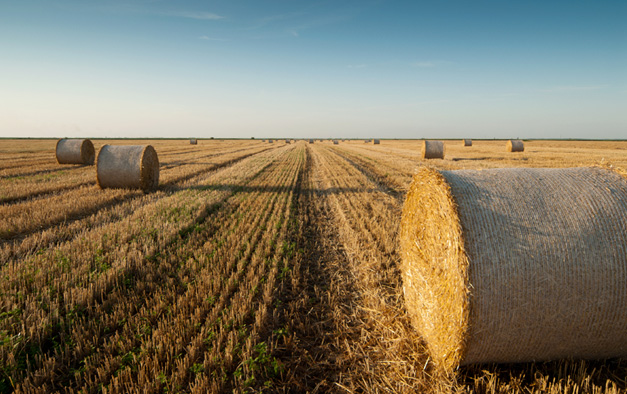
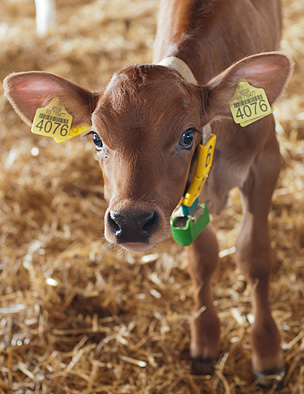
The basic principles for the development of organic farming
The basic principles for the development of organic farming have been established by IFOAM (International Federation of Organic Agriculture Movements). EU regulations, the Codex Alimentarius as well as the Serbian Law on Organic Agriculture are based on these standards.

The principle of health
Organic agriculture should sustain and enhance the health of soil, plant, animal, human and planet as one and indivisible.
This principle points out that the health of individuals and communities cannot be separated from the health of ecosystems – healthy soils produce healthy crops that foster the health of animals and people.
The role of organic agriculture, whether in farming, processing, distribution, or consumption, is to sustain and enhance the health of ecosystems and organisms from the smallest in the soil to human beings. Organic agriculture is intended to produce high quality, nutritious food that contributes to preventive health care and well-being. In view of this it should avoid the use of fertilisers, pesticides, animal drugs and food additives that may have adverse health effects.

The principle of ecology
Organic agriculture should be based on living ecological systems and cycles, work with them, emulate them and help sustain them.
This principle roots organic agriculture within living ecological systems. It states that production is to be based on ecological processes and recycling. Nourishment and well-being are achieved through the ecology of the specific production environment. For example, in the case of crops this is the living soil; for animals it is the farm ecosystem; for fish and marine organisms, the aquatic environment.
Organic management must be adapted to local conditions, ecology, culture and scale. Inputs should be reduced by reuse, recycling and efficient management of materials and energy in order to maintain and improve environmental quality and conserve resources.
Organic agriculture should attain ecological balance through the design of farming systems, establishment of habitats and maintenance of genetic and agricultural diversity. Those who produce, process, trade or consume organic products should protect and benefit the common environment including landscapes, climate, habitats, biodiversity, air and water.

The principle of fairness
Organic agriculture should build on relationships that ensure fairness with regard to the common environment and life opportunities.
Fairness is characterised by equity, respect, justice and stewardship of the shared world, both among people and in their relations with other living beings.
Organic agriculture should provide everyone involved with a good quality of life, and contribute to food sovereignty and reduction of poverty. It aims to produce a sufficient supply of good quality food and other products.
This principle insists that animals should be provided with the conditions and opportunities of life that accord with their physiology, natural behaviour and well-being.
Natural and environmental resources that are used for production and consumption should be managed in a way that is socially and ecologically just and should be held in trust for future generations.

The principle of care
Organic agriculture should be managed in a precautionary and responsible manner to protect the health and well-being of current and future generations and the environment.
Organic agriculture is a living and dynamic system that responds to internal and external demands and conditions. Practitioners of organic agriculture can enhance efficiency and increase productivity, but this should not be at the risk of jeopardising health and well-being.
Consequently, new technologies need to be assessed and existing methods reviewed.
This principle states that precaution and responsibility are the key concerns in management, development and technology choices in organic agriculture. Science is necessary to ensure that organic agriculture is healthy, safe and ecologically sound. However, scientific knowledge alone is not sufficient. Practical experience, accumulated wisdom and traditional and indigenous knowledge offer valid solutions, tested by time. Organic agriculture should prevent significant risks by adopting appropriate technologies and rejecting unpredictable ones, such as genetic engineering.
What is an organic product?
Organic products are obtained through strictly controlled methods of production, regulated by law and known as organic production.
Organic products are safe and free of artificial materials and synthetic and chemical fertilisers, and hence they are healthier and have greater nutritional value. Research has shown that organic products contain as much as 63% more potassium, 73% more iron, 125% more calcium and 60% more zinc than products obtained through conventional farming.
Because of the naturally harmonious methods and processes by which they are obtained, organic products have more nutrients and provide greater life energy, which in turn is responsible for preserving immunity and the regeneration processes and vitality of the human body. They are considered especially important in the nutrition of children.

 |
Food quality and safety: organic products have greater biological and nutritional value in terms of increased vitamin and mineral, calcium, magnesium, iron, omega-3 fatty acid and antioxidant content.
 |
Food free of pesticide and heavy metal residues
 |
Genetically modified organisms (GMOs) and their products are absolutely forbidden in organic farming
 |
Food free of artificial additives, preservatives, emulsifiers and artificial colourings, aromas and flavour enhancers
 |
No residues of antibiotics, growth regulators and other veterinary drugs
 |
Organic products have a distinctive flavour, aroma and colour which we often associate with the forgotten flavour of home-grown produce.
Because they are good for the health of you and your family:
Because they are safe:
Because they are animal-friendly:
Because they are environmentally-friendly:
Because they are of a higher technical standard:
Because they have greater biological value:
Because they have an exceptional flavour, colour and aroma.

Because there are still no specialised shops selling purely organic produce in Serbia, our advice, whether you are buying in the big supermarket chains or health food shops, is to check the packaging for an "organic food" symbol, as well as for the symbol of the certifying body responsible for monitoring the production process.
In Serbia it is the Ministry of Agriculture which guarantees each product bearing this symbol has been produced in line with organic farming principles.

If you buy organic fruit or vegetables at the market, ask the stallholder to show you their certificate, declaration and dispatch note so you can check the date and be sure that you are buying an organic product.
There is also a symbol for produce that has not yet been given the status of an organic product since the production process is still undergoing conversion. Such produce is not fully organic but is on the road to becoming organic and bears the legend “Product under conversion to organic farming”.For organic production to be acceptable to farmers, motivation alone is not enough – there is the economic aspect to think about. Organic production methods can only be successful if they are able to cover costs and give the producer a favourable return that allows him a decent living standard.
In moderate climates, where greater yields are achieved through conventional farming, conversion to organic production generally brings with it a 10-50% reduction in yields, depending on the crop and the system of cultivation used. The farmer interested in conversion to organic farming needs to factor in a reduction in yields in the initial years of production and a certain level of recovery after three to five years.
Organic farming is a form of farming that requires less investment and offers greater reductions in costs. The farmer converting to organic methods can reduce his costs very effectively, for example, by recycling as much material on the farm as possible. Labour costs can be reduced by taking preventive measures against disease, pests and weeds. He can reduce investment costs by using local plants to prepare proprietary pesticides, by rearing animals to produce fertiliser, milk, eggs and meat, by producing his own cattle feed, sharing equipment and machinery with his neighbours, etc.
Organic farming is orientated towards the future and towards further development, not just in terms of environmental protection and the improvement of human health, but also in terms of economic prosperity.
Without state assistance it is unlikely that these production methods can withstand competition from conventional methods as the impact of organic farming cannot be viewed from a short-term perspective. Its results only become apparent after a number of years.
The important thing is that we have the necessary preconditions for the development of organic farming. We are familiar with the production technologies, and all we need to do is continually educate and guide interested producers regarding this type of agriculture.
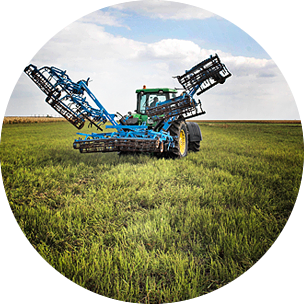
Despite the challenges, economic indicators tell us that organic production is gaining in significance today. Sales of organic products in EU countries have grown in value from 23 billion to 40 billion dollars in the last four years. Prices of organic products are still high, despite the increase in sales volume – between 15% and 30% more than the equivalent product obtained through conventional production methods. Although most organic produce from Serbia is destined for export to the markets of the EU and the US, there is great potential for development of the local market. Demand needs to be stimulated by informing and educating consumers about organic produce.
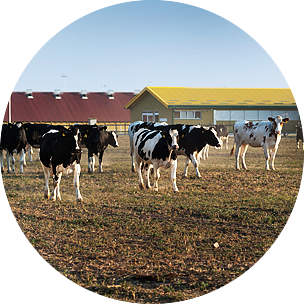
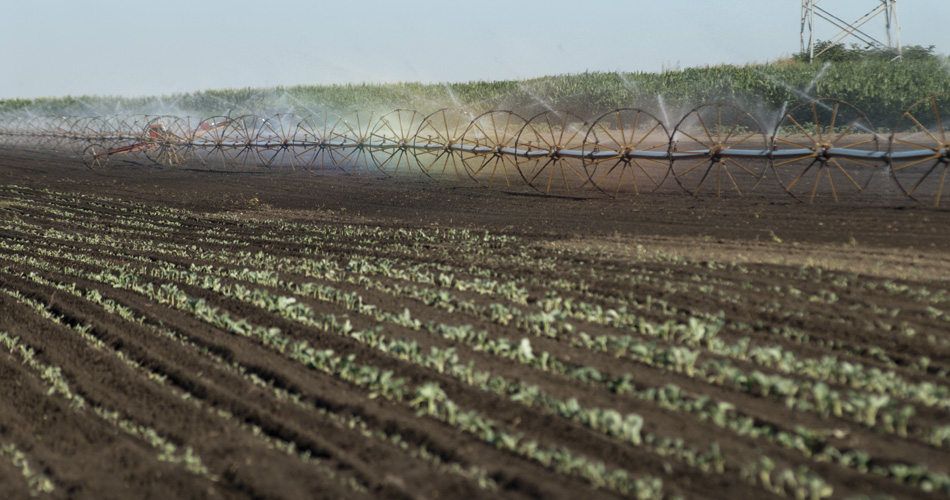
The main aim of organic farming is to maintain and increase the fertility of the soil.
We have set aside the crop-growing operation on more than 2,000 hectares of land entirely for the purpose of producing feed for the milk cows on our farm, which in turn produce organic milk.
Although crop growing is possible without cattle-rearing, the reverse is not possible.
Another part of our crop-growing operation services our biogas plant which, as well as liquid and solid manure, uses corn silage to produce its main commodity – electrical and heat energy – as well as the by-products of substrate (solid organic fertiliser) and liquid organic fertiliser. We use organic fertiliser to supply nutrients to the land we use to grow crops.
Organic fertiliser is usually said to be a complete fertiliser, as opposed to artificial ones which are supplementary. Organic fertiliser returns the nutrients taken from the soil during the harvest/picking.
Organic fertiliser contains living creatures (microorganisms), that break down the components of the soil and make them accessible to the plant. Organic fertiliser also helps maintain temperature levels in the soil by absorbing and accumulating solar radiation, which ensures that the soil warms up better and earlier, and crops can be sown earlier.
Organic fertiliser makes the soil looser, creating space for the air necessary for soil microorganisms to do their work. Loose soil absorbs and retains moisture better, which is important in areas with little rainfall.
We rotate the following crops on the 2,000 hectares that are part of the organic farming operation:
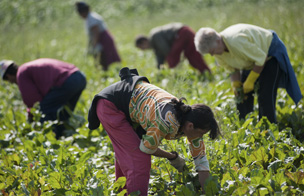
Organic farming using crop rotation as well as other agricultural methods is aimed at preserving the “living” soil as the basis of production. This means increasing soil bioactivity by proper fertilisation whilst maintaining the structure of the soil and introducing long-rooted crops, legumes and crops suitable for producing fertiliser. Microorganisms in the soil play an important role in processing and providing nutrients to the plants. The soil should be worked with light implements in order to disturb the habitat of soil organisms as little as possible. That is why one of the main tasks of the organic farmer is to promote bioactivity.
Organic methods strive to achieve closed-loop production. This means producing feeds, binding nitrogen by sowing legumes, composting leftovers, halting soil erosion and dealing properly with plant remains and manure.
Nitrogen as a nutrient imposes the greatest restrictions in organic farming. It heightens the importance of growing legumes because of their role in binding nitrogen from the atmosphere and returning it to the earth. The processes by which legumes naturally fix nitrogen are leveraged to provide a high level of soil fertility and productivity and quality in the farming operation.
In organic farming, plant diseases, pests and weeds are combated through the proper choice of plant species and varieties and by destroying weeds using physical and mechanical means.
One of the mechanical methods for destroying weeds that we have begun to use for the first time is flame-weeding.
This is done using lit torches that are applied to the leaves of the weed for just one second and which destroy the plant with one-hundred-percent efficiency.
Burners are set in a staggered cross pattern directed at weeds at the root of the crop and so most crop leaves are not exposed to flame and each plant receives just a fraction of a second of intense heat. Small weeds and grass wilt almost instantly due to expansion of their cell sap. Larger competing grass and weeds wilt and are unable to develop when the much more sturdy crops cast their shadow on them.
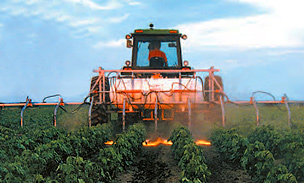
Weeds do not need to be burned to a cinder, the temperature in the plant fibres merely need to be raised to the point where the cell structure is damaged. This destroys the ability of the plant to take on moisture and it very quickly wilts and dies. Since the plants are green and living there is very little smoke. The time that the flame needs to come into contact with the weed varies depending on the type and size but in most cases a tenth of a second is long enough. Smaller and more delicate plants are much more sensitive to flame than mature plants and so the crop must be larger than the weed and grass being treated. Some plants are more resistant to flame-weeding and that is why speed, flame angle, fuel pressure and other variables need to be taken into consideration when preparing to flame-weed.
At the core of crop protection are integral protection methods, coupled with biological protection measures.
The use of water for irrigation in the production of organic food is very important, as is the quality of that water. The water used for irrigation must be of Class I or II according to local legislation.
In organic farming, environmental corridors – natural green belts – need to be established. These are buffer zones with rows of trees, a mixture of plants with useful qualities or wildly-occurring species.
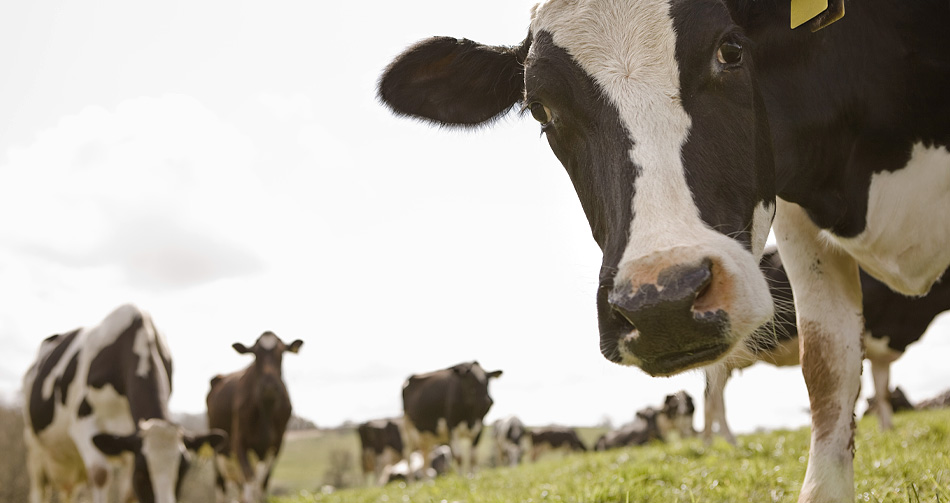
In organic farming animal welfare always has high priority.
First and foremost animals need to be provided with the conditions they need to grow and develop in a way that is aligned with their natural genetic potential. This means respecting the physiological and environmental needs of the animals and creating conditions in which they can exhibit their natural functions and behaviours.
When planning an organic cattle farming operation, species and breeds of animal with a high degree of adaptability to local conditions and resistance to disease need to be selected. Priority during selection is given to local (indigenous) breeds or those already adapted to local breeding conditions and with good resistance to disease. The aim is to avoid the diseases or health issues that are characteristic of species and breeds reared in conventional farming.
The species and breeds of animal must be suited to local rearing conditions
Animals must originate from organic rearing operations or from those undergoing conversion
Facilities where animals are housed need to be suited to the particular animal species (sufficient space and light, with opportunities to go outside)
Animals must be fed organically-produced feed from the same farm or from farms in the region
Organic cattle production requires that animals are allowed to graze on pasture or other land on which cattle feed grows. Food can also be obtained from other holdings, as long as they are certified by an authorised institution.
Because cattle need to spend active time in the open, we have provided more than 20 hectares of pasture on our farm in Čurug, and some 1.7 hectares of grass and parkland – more than the legally-required minimum – ensuring enough space for our 2,000 head of cattle, 1,000 of which are milk cows.
Our observations so far have shown that spending time in the open, in pastures and paddocks, means the animals feel better, are in better health and their appetite improves, which has resulted in a better quality of milk.
The entire complex comprising the farm, cattle feed factory, pastures and auxiliary buildings covers an area of 32 hectares.
One of the most important aspects of successful organic cattle farming is disease prevention. Employees of the farm, and of the Jegrička veterinary centre, work towards this end through:
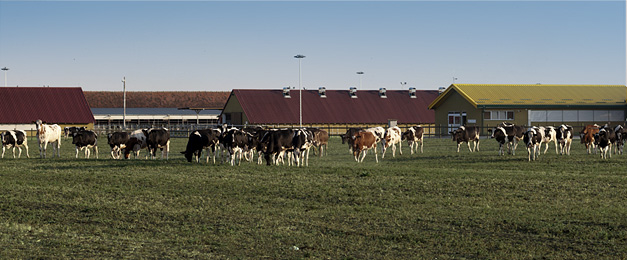
We strictly adhere to the following basic principles of organic cattle production:
- Rearing and management methods and animal health practices
- Cattle feeding
- Veterinary and health protection
Organic cattle farming is not just good for the animals, but also for the human body.
It has been scientifically proven that milk produced by cows fed and reared in this way has a third more omega-3 fatty acids, which contribute to a reduction in fats in the blood.
Milk contains a greater variety of nutrients than any other food.
The taste of milk and dairy products and the important nutrients that they contain mean that they have a major role to play in our diet.
Milk is a natural foodstuff, of ideal composition, comprising more than 200 components: 20 balanced amino acids, milk sugar – lactose, more than 40 fatty acids, minerals, vitamins, pigments, sterines, hormones and others.
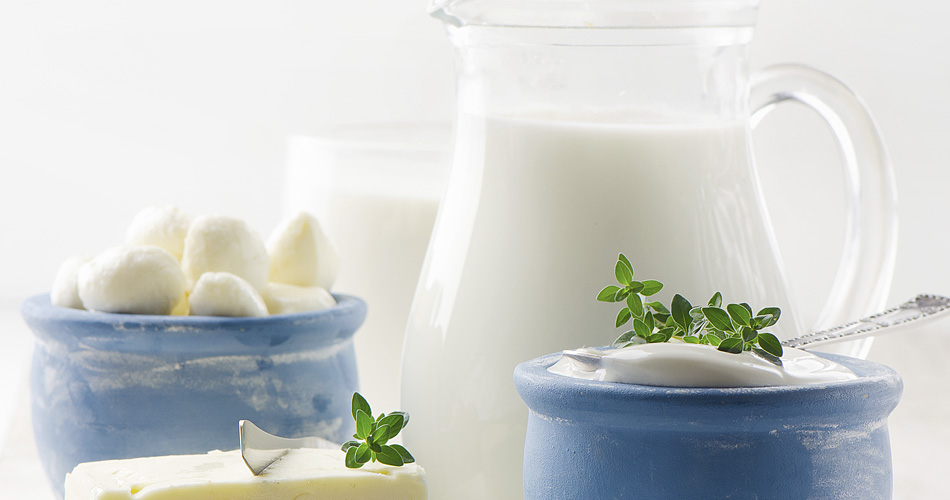
Humans in prehistoric times already understood the value of dairy products.
Some recent research suggests that dairy products were consumed even in the Stone Age. In the north-west of Turkey, in the Sea of Marmara region, earthenware vessels bearing traces of milk and milk fat have been found dating back some 6,500 to 8,500 years. These represent the oldest evidence of the use of milk found anywhere.
It is thought that the use of milk and dairy products may have first developed in Turkey due to the favourable climate and conditions suited to rearing livestock, particularly because of the frequent rainfall and abundance of green pasture.
It is interesting to note that the first users of milk did not drink it but ate cheese and butter and drank yoghurt. Milk was not drunk until some 1,500 to 2,000 years later, it is thought because of lactose intolerance. Later, as dairy products spread across Europe, genes tolerant to lactose surfaced enabling even adults to digest it well.
![]()
Similar earthenware from the late Stone Age has been found all across Turkey, as well as in south-eastern Europe and the Middle East.
Together with the vessels, bones have been found that have been identified as belonging to cows, leading to the conclusion that the milk used was cow’s milk.
When we refer to milk in Serbia we usually mean cow’s milk, since it accounts for 95% of the raw material used in the dairy industry and hence only cow’s milk can be sold labelled as “milk”. Any product obtained from the milk of another dairy animal must be indicated as such (sheep’s milk, goat’s milk, mare’s milk etc.)
The composition of milk is variable and can depend on a great number of factors (species, breed, lactation period, diet, etc.)
The typical composition of the milk of the domestic patterned cow is as follows:
| Component | Content g/100g | |
| Average value | Range of variation | |
| Water | 87,5 | 87 - 88 |
| Proteins | 3,13 | 3 - 3,2 |
| Fats | 3,76 | 3,6 - 3,8 |
| Carbohydrates | 4,84 | 4,8 - 4,9 |
| Minerals | 0,8 | 0,7 - 0,97 |
So we can say that milk is made up of the following components:
Vitamins in milk
Vitamins play an important role in our bodies, among other things affecting the metabolism and transport of oxygen and boosting the effects of antioxidants. They assist the body in making use of carbohydrates, proteins and fats.
Milk is a very good source of the water-soluble vitamins thiamine (vitamin B1), riboflavin (vitamin B2) and cobalamin (vitamin B12), while quantities of niacin (vitamin B3), pantothenic acid (vitamin B5), pyridoxine (vitamin B6), vitamin C and folic acid are only present in small quantities and it cannot be considered a primary dietary source of these vitamins.
Milk contains significant quantities of vitamins A and D and small quantities of vitamins E and K, which are fat-soluble.
Minerals in milk
Minerals also play a major role in our bodies, such as in the functioning of enzymes, bone growth, maintaining water balance and the transport of oxygen.
Milk is a good source of calcium, magnesium, phosphor, selenium and zinc. Many of the minerals in milk work together in the form of salts, such as calcium phosphate.
Milk also contains copper, iron, manganese and sodium, but in quantities too small for milk to be considered a primary dietary source of these minerals.
Milk has great nutritional value, with a good balance of proteins, carbohydrates, fats, vitamins and minerals.
After egg proteins, milk proteins have the greatest biological value of any proteins occurring in nature. It is considered that by drinking a litre of semi-skimmed milk or an equivalent quantity of dairy products per day an adult can entirely meet their body’s needs for animal-based proteins, and most of its vitamin and mineral needs.

Lactose, which is a sugar, facilitates the absorption of calcium in the digestive organs, while the fats in milk are its greatest energy source.
The composition of milk is such that it assists in all the functions of the human body. It plays a role in preventing stomach ulcers, tooth decay and chronic bronchitis, increases mental energy and reduces high blood pressure and cholesterol levels.
It has been shown that two to three cups of milk a day provide protection from cancer of the large intestine. Milk has a preventive effect on osteoporosis, preventing its development in post-menopausal women, and people who have drunk milk from early childhood have significantly stronger bones.
The proteins, carbohydrates and fats in milk aid the human body in cell-building and regeneration, growth and development, the production of haemoglobins, the regulation of water flow in the body, maintaining proper acid-alkali balance, the creation of enzymes, hormones and antibodies, and the transport of fats and other materials, as well as in supplying energy for daily use. Fats are necessary for dissolving vitamins A, E, D and K. They play a role in forming and renewing cell membranes, nerve tissue, hormones and bile. The vitamins and minerals in milk take part in the growth and regeneration of the body and in regulating all the body’s processes.
Because of its high concentration of readily accessible calcium and vitamin D, milk is the best food for maintaining the health and strength of our bones. 99% of all the calcium in our bodies is located in our bones and teeth, which means it is very important for sound bone structure.
The required daily dose of calcium depends mainly on age, the recommendation being that:
Among the exceptions are pregnant and breastfeeding women and women going through the menopause, who have an increased need for calcium and whose recommended daily intake of this mineral is 1,200 milligrams.
Two cups of milk contain about 600 mg of calcium.
Vitamin A maintains the transparency of the cornea and plays a role in the conversion of light energy into nerve impulses that happens on the retina. This is why, for good eyesight, regular intake of milk and dairy products is recommended due to their vitamin A content.
In extreme cases, depleted vitamin A supplies in the body can lead to night blindness, a syndrome where the eyes recover slowly from flashes of light in the dark or the eyesight is impaired in low light levels.
Processed milk products play a very important role in the diet of both healthy and sick people. They are easily digested, have good dietary characteristics, extended shelf life and there is a wide range of products enriched with added fruit, grains, vitamins and minerals.
These products are good sources of calcium and the B group of vitamins, and the quantities of carbohydrates (lactose) are lower in comparison to milk, making them suitable for people with allergies to the lactose in milk. It is believed that daily consumption of these products helps establish normal functioning of the digestive tract by renewing the gut flora, which makes them beneficial in the treatment of various types of diarrhoea.
Products of this type (natural yoghurt, sour cream, kefir, etc.) are obtained through lacto-fermentation in the presence of lactic acid bacteria. These are known as probiotic bacteria and so these products are also known as probiotic products.
Why consume milk and dairy products?
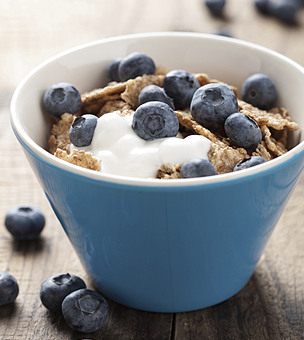

Milk and dairy products can be labelled “organic” if the milk has been obtained from cows that are fed exclusively with organic feed, that have enough space to live and move, that have enough light, that are let out to pasture, are not treated with synthetic hormones, where GMO is forbidden and where the products have been verified by a certifying body and a certificate issued.
As regards quality and food safety, there is no great difference between organic and conventional milk. Both types contain a similar breakdown of nutrients that make milk an important part of the diet.
When we talk about the definition of milk we are talking about the way in which the farm it comes from is run, not about the quality and safety of the milk itself.
Strict government standards ensure that both organic and conventional milk are perfectly healthy, safe and nutritious. It is up to the consumer to choose.
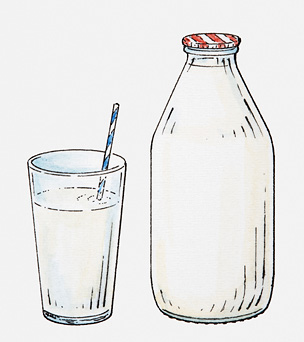
Recent research has shown that organic milk has some additional benefits over conventional milk. One of these is greater quantities of certain nutrients, resulting from the natural feed given to the milk cows, composed in large part of fresh grass, silage and clover.
Some recent studies have shown that organic milk contains greater quantities of omega-3 fatty acids (alpha-linolenic acid – ALA) which are of great importance for the maintenance of a healthy heart. Consumption of omega-3 fatty acids significantly reduces the risk of sudden heart attack or stroke.
It has also been shown that these acids reduce joint pain and muscle stiffness in the morning and make it possible to reduce the quantities of medications taken by rheumatoid arthritis sufferers.
Use of omega-3 fatty acids has been clinically tested in combating osteoporosis, bipolar disorder, schizophrenia, bulimia, anorexia, different types of dermatitis, psoriasis, burns, asthma, macular degeneration, menstrual cramps and inflammatory bowel disease.
Other research has shown that organic milk contains up to 71% more omega-3 fatty acids than conventional milk and that it has a better ratio of omega-3 to omega-6, which is good news as people often have an imbalance.
People who do not take in enough omega 6 fatty acids or do not maintain a balance in their consumption of omega-3 and omega-6 fatty acids have an increased risk of suffering from depression.
Symptoms that can arise due to a lack of essential fatty acids:
Omega 3
High blood pressure
High triglycerides
Learning problems
Motor incoordination
Tingling in the arms and legs
Behavioural changes
Immune disorders
Sticky platelets
Dry skin and oedema
Omega 6
Eczema-like skin eruptions
Hair loss
Kidney and liver degeneration
Behavioural disorders
Heart and circulatory diseases
Susceptibility to infections
Slow healing of wounds
Sterility and miscarriage
Growth retardation
Both types of milk also contain conjugated linoleic acid (CLA) which has recently sparked great interest because of its health benefits, and which is present in greater quantities in organic milk and meat. It has been scientifically proven that this acid inhibits the processes that lead to atherosclerosis, diabetes, chronic inflammation and carcinoma.
A study carried out in Holland on 3,000 women made a connection between incidence of eczema in small children and the consumption of organic milk. The research began when the women were in the final weeks of pregnancy and ended when their children reached two years of age.
The results reflected favourably on organic milk, revealing that incidence of eczema was reduced by 36% in children who had consumed organic milk products.
It should be noted that in the western world a third of children suffer from one or more allergies such as eczema.
It has also been scientifically shown that the human body reacts better to organic milk than to conventional milk as it contains less harmful fats. Tests have shown that the level of polyunsaturated fatty acids, which increase the energy of the heart and the body, is 60% higher in organic milk.

Facebook-u